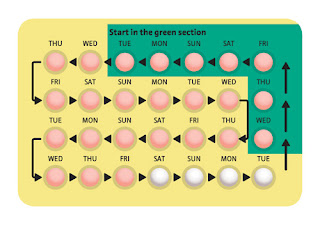So you planned to you the birth control pill (Which is the right pill for me?) as a contraceptive method as you are here, but all seems a confusing decisions , right? Not surprising, given the dozens about
birth control pill, the United States today, and all other forms of contraception. This guide can help you get the different types of
birth control pill and some of the advantages and disadvantages.
As approved by the U.S. Food and Drug Administration (FDA) as "
birth control pill" in 1960, was one of the most popular and effective reversible
birth control pill ever invented. According to Planned Parenthood, among American couples using contraceptives has more than 30 percent of the
birth control pill.
Recent years have changed the hormones in the
birth control pill less, which are fewer side effects. In fact, virtually all healthy women who use birth control pill do not smoke, regardless of age. Unlike the original use of oral contraceptives, low-dose pills that offer some health risks for most women and health benefits.
Birth control pill has health risks. For example, if you are over age 35 smoke or have certain medical conditions, such as history of blood clots or breast cancer orendometrial, your doctor before taking oral contraceptives. The
birth control pill do not protect against sexually transmitted diseases (STDs), including HIV (Human Immunodeficiency Virus), the virus that causes AIDS, or the case against HPV, human papillomavirus, Cancer of the cervical possible.
Sold as opposed to forms of
birth control pill at the counter, you need a prescription to buy medicine in the
birth control pill, and many companies do not cover health insurance costs. The only exception is Plan B emergency contraceptive pill One-Step, which goes against women 17 and over sold.
In short, the
birth control pill hormone regulation surrounding ovulation, preventing the release of an egg each month. If there is no egg to be fertilized are available, you can not get pregnant.
Specifically, this is how
birth control pill works: At the beginning of each menstrual cycle compared to the levels of the hormone estrogen to grow. Estrogen helps thicken the lining of bloody theuterus (endometrium) to prepare for a fertilized egg. When estrogen levels peak about 14 days in the menstrual cycle, one ovary is one or more versions of this release eggs as ovulation.
Received after ovulation progesterone levels of another hormone breeding site for help in preparing the uterus for a fertilized egg by thickening of the mucosa. The egg travels down the fallopian tube toward the uterus, and if the egg is fertilized and successfully implanted in the womb from conception (pregnancy) performed. If the design of the signal does not occur, estrogen and progesterone decreases, the band now thickens uterine lining, or the blood shed, and menstruation begins.



No comments:
Post a Comment